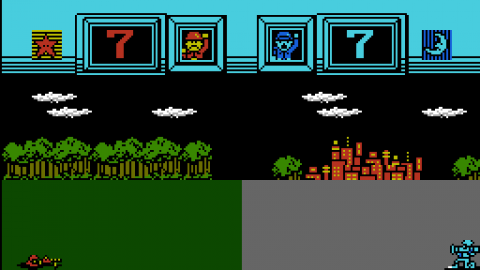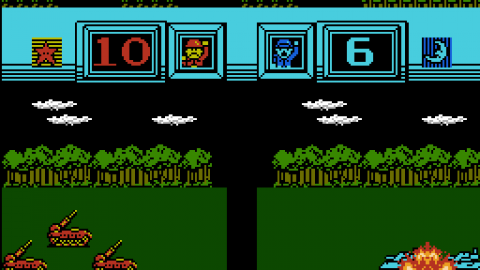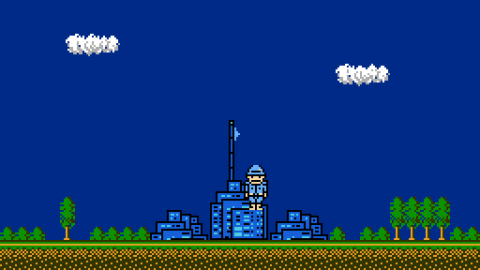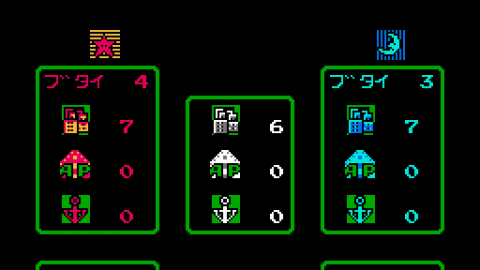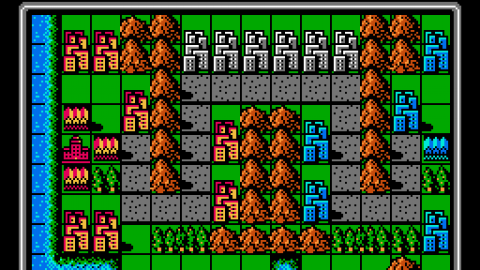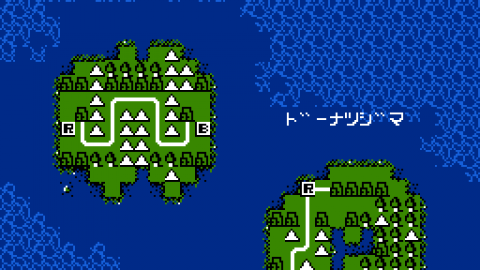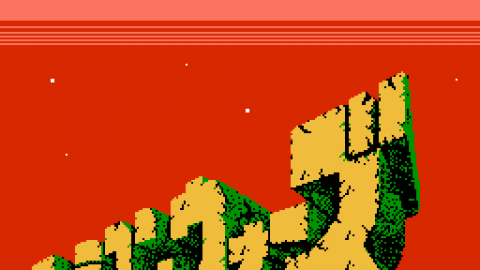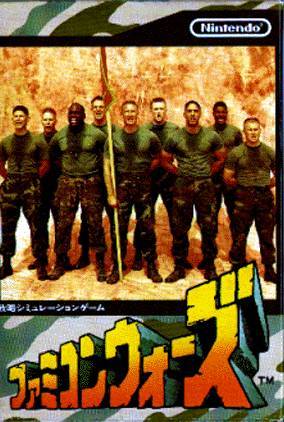Overview
In 1988, Intelligent Systems released Famicom Wars, their first game for the Nintendo console (Famicom). This turn-based military strategy game laid the foundations for the Nintendo Wars series and introduced its hallmark mechanics and cartoonish style. Although Famicom Wars never saw a release outside of Japan, subsequent games in the series, better known as Advance Wars, became international hits.
Gameplay
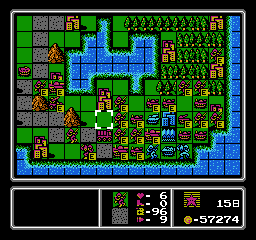
Players control one of two armies--Red Star or Blue Moon. The goal is to attack the opposing force by using a variety of land, air and sea units. Each turn, players receive currency based on the number of buildings and facilities they have under their control; they then use this currency to produce more military forces. Players achieve victory by either capturing the enemy's headquarters or clearing the map all visible enemy units. Though gameplay takes place on an overhead, grid-based map, battles between units unfold through short, animated cut scenes.
The strategy players utilize in Famicom Wars revolves around the inherent strengths and weaknesses of each unit. Units relate to each other in a rock-paper-scissors fashion: jet-fighters are strong against other air units, but weak against anti-air missile launchers; likewise, although anti-air missile launchers can decimate flying foes, they are susceptible to tanks and other ground-based units. Furthermore, only infantry and combat engineers are able to capture enemy and neutral facilities, such as military bases, cities, factories, airports and sea ports.
Terrain also plays a large role in strategy. Whereas roads and flatlands allow for greater unit mobility per turn, they offer little in the way of defense. Forests and mountains, on the other hand, impinge on unit movement but provide a large defense bonus.
Man-made facilities constitute the final element of Famicom Wars gameplay. Each army begins a game with a military base which can create ground units and provides currency each turn. Similarly, captured seaports and airports also offer an amount of funding per turn and allow the creation of sea and air units. Players can further increase the amount of funds they receive by capturing cities. Factories, similar to military bases, allow for the production of ground units, but they are the only facility in the game that does not reward the player with currency.
Units
Ground Units
- Infantry
Equipped with a machine-gun, this unit can traverse mountains, forests and rivers. Along with the combat engineer, this is the only unit able to capture military bases, factories, seaports, airports and cities.
- Combat Engineer
Equipped with a missile launcher, the combat engineer's movement is slightly less than regular infantry, but it excels at attacking land-based vehicles. Along with infantry, this is the only unit able to capture enemy or neutral facilities.
- Tank
This heavily armored, highly mobile unit comes in two varieties, heavy and light.
- APC
The APC is able to transport infantry and combat engineers over long distances, but lacks any sort of weaponry.
- Artillery
The long-reaching attack of the artilary unit is balanced by weak amormment and the inability to attack adjacent units. Like the tank, there are two varieties, heavy and light.
- Anti-Air Missile Launcher
Able to attack aircraft at a distance, but it lacks the ability to engage land and sea forces.
- Flack Cannon
Similar to the anti-air missle launcher, the flack cannon can only attack air units. It is weaker than its counterpart, but also cheaper to produce.
- Supply Truck
Though it lacks any weaponry, the supply truck can resupply ammunition and gasoline to any units in the field.
Air Units
- Jet Fighter
This air-to-air unit comes in two varieties, heavy and light.
- Bomber
The bomber lacks defensive capabilities, but its range and attack power allows it to decimate land-based units.
- Transport Helicopter
An airborne version of the apc--able to transport infantry or combat engineers over long distances.
Sea Units
- Battleship
A seaborne version of artillery--Its long range also means it cannot attack directly adjacent units.
- Transport Ship
Similar to its land-based and seaborne brethren, the transport ship can ferry inrantry and combat engineers across water obstacles.

 Nintendo Entertainment System
Nintendo Entertainment System Wii Shop
Wii Shop Nintendo 3DS eShop
Nintendo 3DS eShop Wii U
Wii U









